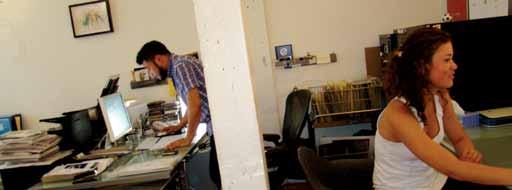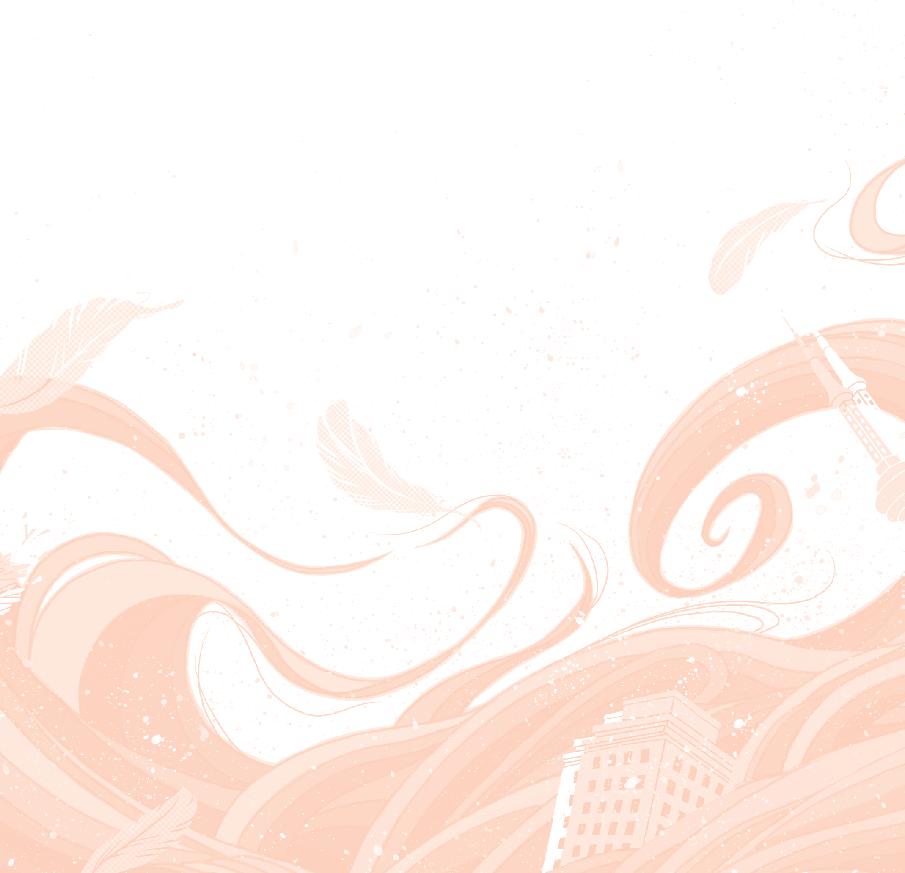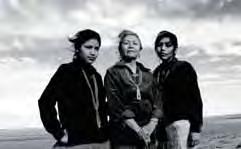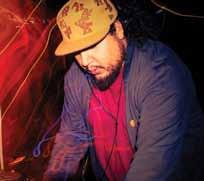
5 minute read
New Media Installation
Codetalkers of the Digital Divide (or why we didn’t become “roadkill on the information superhighway”) Curated by Cheryl L’Hirondelle
In partnership with
Advertisement
26 A Space Gallery, September 18 – October 24, 2009 401 Richmond Street West, Suite 110 Tuesday – Friday, 11am – 6pm, Saturday noon – 5pm
Curator/Artist Talk and Reception Friday, October 16, 5 pm – 7pm
As we move as quickly as bytes of information, catapulted through time and space and by the imperative of our continued survival, it is important to hit the pause button, reflect on our history and pay homage to the agency and ingenuity of our pathfinders. For the 10th anniversary of the imagineNATIVE Film + Media Festival, Codetalkers of the Digital Divide will contextualize what “new media” was pre-Internet to what it has become in the current web 2.0 paradigm and how we have used it to tell our stories. Like our ancestors before us, we have always been keen to identify new tools to accomplish a necessary survival task. The multidisciplinary artists honoured in this exhibit are renowned masters of this; their example embodies and manifests the imperative of being skillfully adept with a variety of disciplines and media.
All artists involved, and their exhibited work, reinforce and pay homage to the eloquence and adaptability of Aboriginal artists, languages and worldviews. By virtue of our ingenuity, we are all modern day codetalkers bridging and championing the chasm that, at one point in our recent history, was thought by some to be an unconquerable digital divide.
Artists and their work:
Alanis Obomsawin (Abenaki) is one of Canada’s most distinguished documentary filmmakers and has been making uncompromising films for almost 40 years. Her curriculum-based filmstrip/audio projects illustrate her dedication both to her art form and to young people in that they utilized the most innovative and immersive media of the time for educational purposes. Manawan (1972), introduced to school children and university students, tells the story of previously unrecognized Indigenous identity (the Atikamekw people) and the notion of community collaboration. Utilizing the tone-triggered technology of the time, encoded within the opening narrative by Cesar Newashish is the reminder of language, code, translation and the legacy of relationships – something computing relies on for optimal execution, performance and versioning. http://www.nfb.ca/alanis-obomsawin
Buffy Sainte Marie (Cree) virtually invented the role of Native American international activist pop star and showed the world what a consummate visionary can do. Selected works from her 1994 Painting with Light series reveal her use of early versions of digital imaging software such as MacPaint, PixelPaint and Photoshop to discern untold/unseen layers of narrative from both archival and contemporary photographs. She also introduced, in this art project, the concept of pixels-as-beadwork, explaining “The tools are whatever we can get, beads or pixels, hunting bows or a computer.” Travelling the world with a guitar and mouth bow, she is world renowned for “making music on a weapon” – another poignant reference to the early military uses of what have become common-day technological and computing devices. http://www.creative-native.com/
Melanie Printup Hope is of Tuscarora descent and is wellknown for her video work. Her on-line project Prayer of Thanksgiving (1997) takes the viewer/user through the very “backbone of the Iroquois culture” with her magnificently rendered point-and-click prayer site. A cultural documentary, each page beautifully illustrates her masterful artistic process of working with concepts, materials and tools—from beading, digital audio recording, hardware/ software manipulation and hypertext markup language. Every page contains audio samples of each phrase of the prayer in the Tuscarora language – a vital linguistic legacy she leaves for future generations. http://www.artinjun.ca/printup_hope/
Ahasiw Maskegon Iskwew (Cree/French Métis) was born in northern Alberta. His brilliant contributions as a performance artist, organizer, curator, critical writer and Web-based media artist have enriched Canada’s cultural fabric. isi-pîkiskwêwin-ayapihkêsîsak (Speaking The Language of Spiders) (1996) presents Indigenous cosmologies within gritty poetic text and intuitively encoded images aimed at engaging the urban at-risk youth demographic. The Web site is defined by domains or states of being vis-à-vis Saulteaux cosmology and the title refers to his vision to use this technology to create an enduring Web presence for the benefit of future generations. Ahasiw passed away in 2006. http://www.snac.mb.ca/projects/spiderlanguage/
Mike MacDonald (Mi’kmaq) broke new ground in video and later in Internet-based art beginning in 1979. As a natural and intuitive extension of his multi-channel sculptural installations, Butterfly Garden (originally commissioned by St. Norbert’s Arts Centre in 1998) offers a loving and carefully cultivated on-line tutorial of how to grow a butterfly garden with Indigenous plants from this land. Mike passed away in 2006. http://zajac.ca/butterflygarden/
Jimmie Durham (Cherokee) is an American-born sculptor, essayist and poet currently living in Europe. In 2000, long before locative media artists were wandering the earth with GPS devices, he created his own interactive map. You are Here (Sie Sind Hier) chronicles places of personal relevance in his adopted home city, Berlin, that offer the user humorous though sometimes seemingly ciphered histories, insights and truths. http://uinic.de/alex/en/durham/sie-sind-hier.html
Jackson 2bears is a Kanien’kehaka (Mohawk) multimedia artist based in Victoria, BC. Ten Little Indians (2005) introduces the DIY ingenuity and rhythm of future generations with the concept of remix as “a means of discovering a self-reflexive path of engagement with his own Native heritage by way of remixing and re-appropriating Indigenous identity for himself.” http://jackson2bears.net/10LittleIndians/
Jennifer Wemigwans is an Ojibwe writer and media artist from Wikwemikong First Nation. In recognition of her personal experience as an adult literacy teacher regarding the effects of cultural disenfranchisement she found among contemporary urban Aboriginal people, she shares with the world FourDirectionsTeachings.com (2007). The site was painstakingly researched and is her gift to us—a map back to our source. http://www.fourdirectionsteachings.com/
Isuma (Igloolik Isuma Productions) was incorporated in January 1990 as Canada’s first Inuit independent production company. Demonstrating their exceptional ability to adapt to and master new communications technologies, they share with the world IsumaTV 2.0 (2009). The site is an ever-growing database of user-generated audio, video and digital images and as such is a keeper of many endangered Indigenous languages. http://www.isuma.tv
Curator Cheryl L’Hirondelle (Métis/Cree/German) is an award-winning multi- and interdisciplinary artist, singer/ songwriter and musician. Her work investigates the junction of a Cree worldview in contemporary time and space. http://www.ndnnrkey.net










